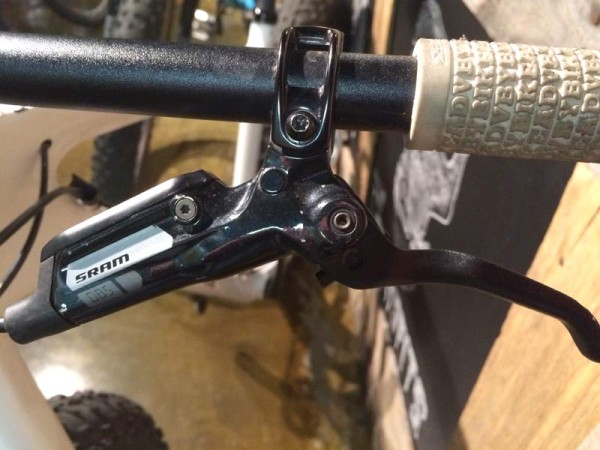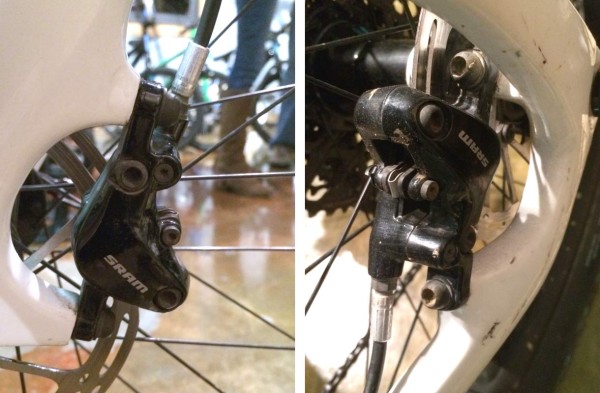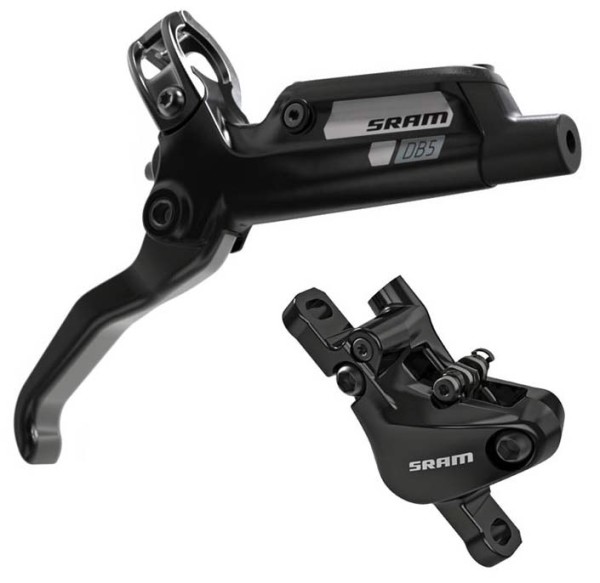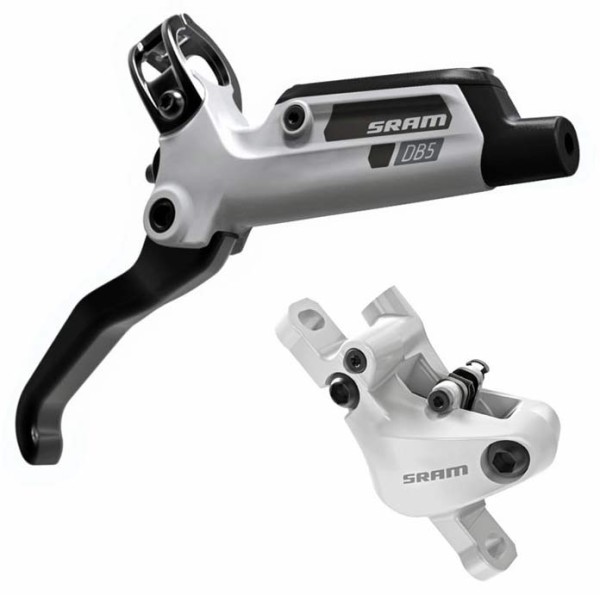Many times when companies come out with a really great new product, the flagship models get all the press and the price point models are barely mentioned. Such is the case of the SRAM DB5. When they introduced the Guide brakes this year, there was a lot of well deserved press for the excellent brakes that finally stopped riders from swearing at those “A” brand brakes typically spec’ed on SRAM-equipped bikes. But nary a word was mentioned of the Guide’s little brother DB5. And since they’re most commonly found as OE spec on $1,500-$2,500 bikes, intended to replace the Avid Elixir 5, it’s unlikely your local shop has made much of a big deal about their either.
Fortunately, they get all the good trickle down from the Guides and the older Avids (yes, there was some good in there). Not only are they are really good brakes, but they’re available aftermarket for a pittance. In other words, they should have made a bigger deal about these.
Stop in to see what makes this $99 model such a shining gem in the new SRAM brake line…
SRAM introduced the DB line of brakes alongside the Guide line, but without much fanfare. Both lines moved the mid and high end brakes out of the Avid brand name and into the SRAM brand name, to better align with the rest of the company’s products.
The DB5 is intended to replace the Elixir 5 in SRAM’s brake lineup, and uses a similar caliper with 21mm pistons and a fixed position cable port as the previous brake. The major difference is the new DB5 uses a lever that is almost the same as the new Guide R brake, except with a tooled reach adjust instead of a tool-free. So yes, that means the all-important internals are exactly the same. The DB5 also uses SRAM’s new Centerline rotors, which is one of the major departures from the previous Avid line.
In our ride tests of the Guide and DB5 brakes, the new Centerline rotors were one of the greatest improvements in the overall package, eliminating the turkey gobble the G-series rotors were infamous for. We spoke with James Alberts, SRAM Product Manager, to hear more about them:
“Rotor development, like all of our products, is driven by engineering. Industrial Designers are always part of the development team, but when optimizing a rotor for thermal, noise, and power performance, small changes to geometry can make a huge difference. CenterLine’s design came directly from the minds of our engineers and was tested and optimized by engineering with our ID team being informed. What’s notable is that it looks different, but the aesthetic is the direct result of engineering.”
MSRP is $99 for the brake (per wheel) and does not include rotor. SRAM sells the rotors separately that the consumer can choose rotor size, but that also means they may choose other rotors, and miss out on the performance benefits of the Centerline. We don’t recommend it, but you will find some bikes spec’d with the older G2 rotor.. We asked James about this:
“OE’s choose the rotor they wish to pair with a brake, however most bikes you will see with a DB5 brake will come with CenterLine rotors. The noise reduction and thermal management performance of CenterLine rotors make them a popular choice. It’s worth noting that CenterLine rotors are backwards compatible as well, so they will work with brakes we produced before Guide and DB5.”
Even though the Guide brakes have received most of the press, the DB5 is the most likely brake to show up on the bikes most of us can afford. When you get that new bike, make sure the company spec’ed the Centerline rotors too, since they are a huge part of what makes the brake great. And with the majority of the good things that came on the Guide, packed into the DB5, that’s a really good thing for riders.
SPECS:
• Weight: 410g
• Lever Material: Aluminum
• Caliper Design: 2-piston caliper
• Finish: Gloss Black, White
• Rotor: Centerline (recommended)
• Pad: Steel-backed Organic
• Fluid: DOT 5.1
• Mount: Ambidextrous
• Adjustment: Tooled Reach Adjust, Banjo Adjust
• Special Features: Tooled Reach Adjust, Piggyback Reservoir, MatchMaker X compatible
• Material: Aluminum
• Pad / Holder: Top-loading
• Intended Use: XC/TR
• System: Open System
• Rotor Sizes: 140 (rear), 160, 170, 180, 200mm
• Tool-Free Pad Replacement
It’s even available in white!



